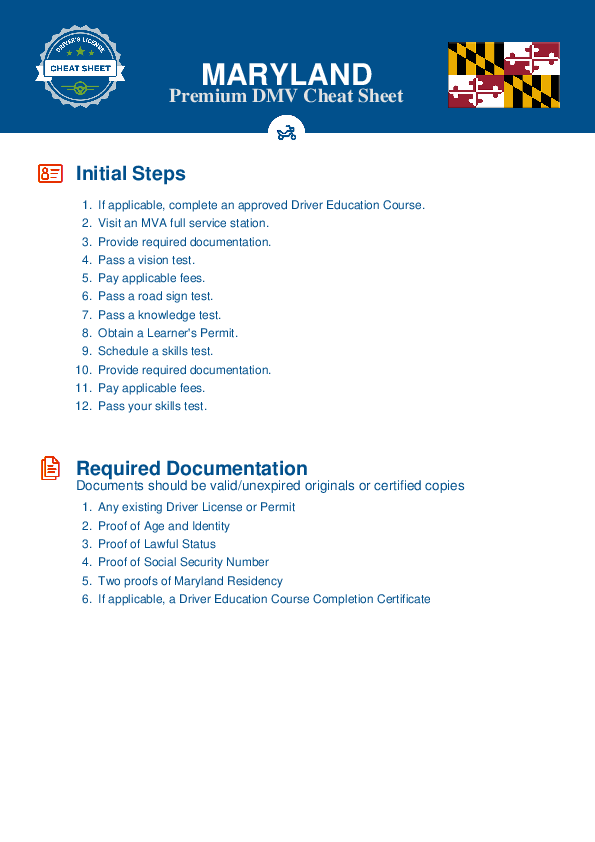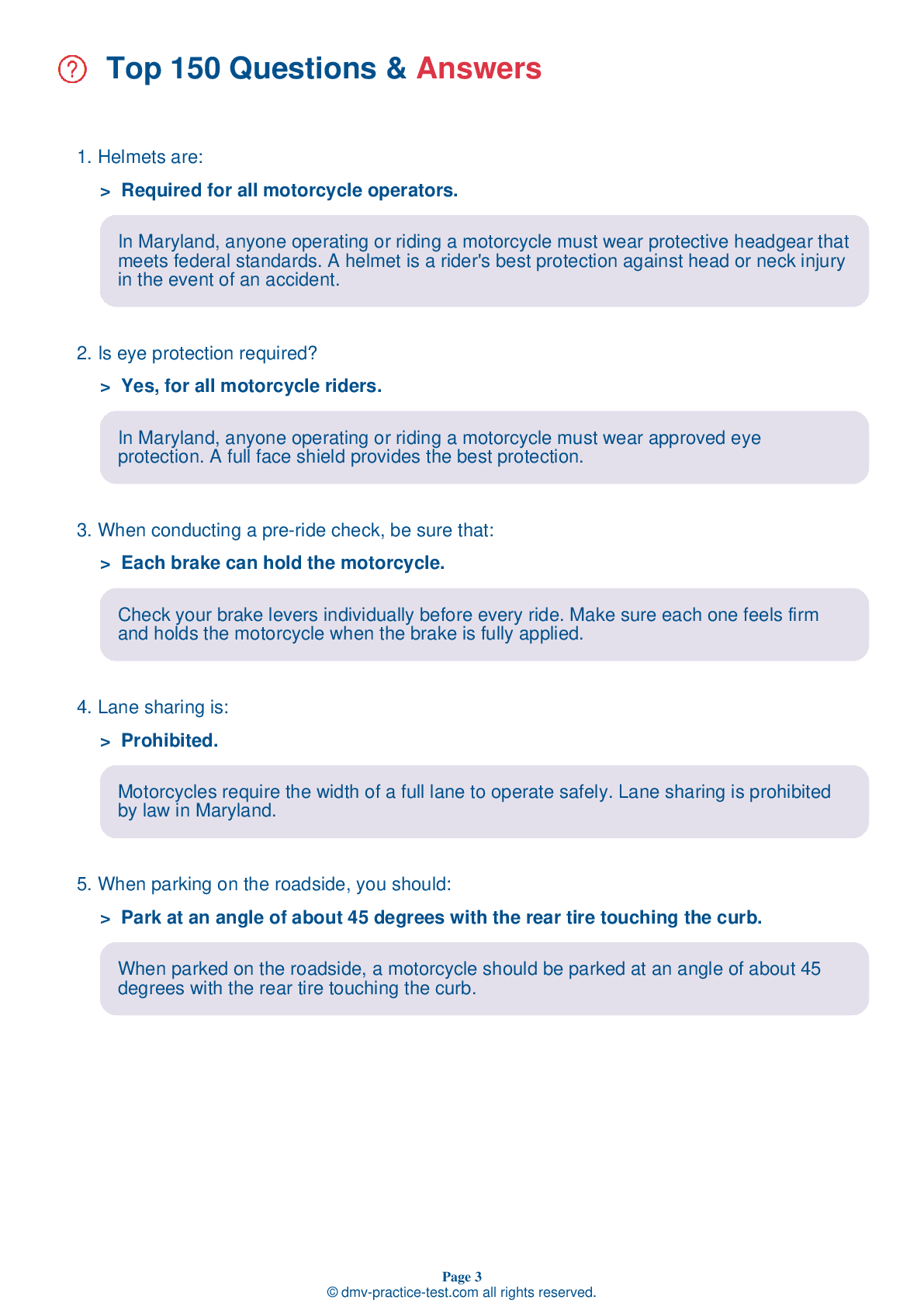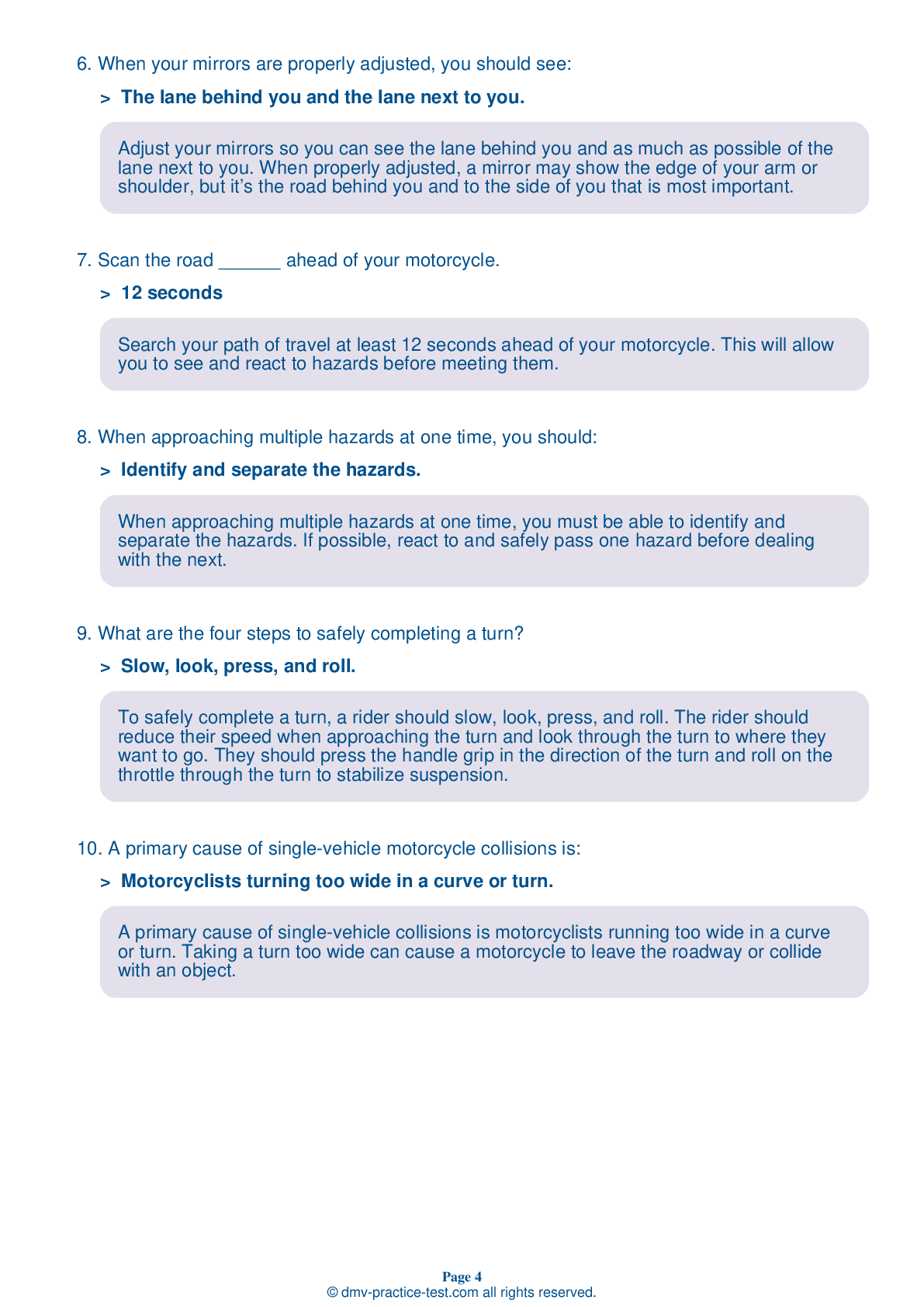Motorcycle Test | License MD 2025 | FREE Online Practice! #12
Take this FREE motorcycle test (license in MD 2025) to check your knowledge of the road rules. To improve your results, download a motorcycle handbook online, study theory, and practice for free on our website. Still worried about how to get a motorcycle license in Maryland in 2025? Check our website for more sample tests, train as much as possible, and boost your grades!
1 . Motorcycle riders should choose footwear with soles that:
Choose riding boots or shoes that are high and sturdy enough to cover and support your ankles. Choose footwear with soles made of hard, durable, slip-resistant material.
2 . It is important to flash your brake light when:
It is a good idea to flash your brake light before slowing if someone is following you too closely. The other driver may be focused on you and be unaware of the upcoming hazard that is causing you to slow down. It is also important to flash your brake light if you are about to slow down in a place where other drivers might not expect you to do so.
3 . When riding behind a car, you should ride:
When following a car, you should ride in a position that allows the driver to see you in their rearview mirror. Usually, that means riding in the center portion of the lane. Because most drivers check their rearview mirrors much more often than they check their side mirrors, being in this lane position increases the chance that they will see you.
4 . Helmets are:
In Maryland, anyone operating or riding a motorcycle must wear protective headgear that meets federal standards. A helmet is a rider's best protection against head or neck injury in the event of an accident.
5 . When carrying a passenger in a sidecar, you should:
The added weight of a passenger in a sidecar will affect the handling of your motorcycle. Expect your motorcycle to require extra space to come to a complete stop.
6 . What could happen if a motorcyclist takes a turn too fast?
Riders often try to take curves or turns too fast. When they can’t hold the turn, they end up crossing into another lane of traffic or going off the road. Riders also often overreact and brake too hard, causing a skid and loss of control.
See the exact questions that will be on the 2025 Maryland DMV exam.
99.2% of people who use the cheat sheet pass the FIRST TIME
Jeneen was tired of paying $5/gallon. She got herself a scooter that required the motorcycle license. She studyed the motorcycle test cheat sheet and passed her test the next day!
Christopher tells us how he knew nothing prior to obtaining the motorcycle study guide, and he only got one question wrong because he clicked on the wrong answer by mistake.



